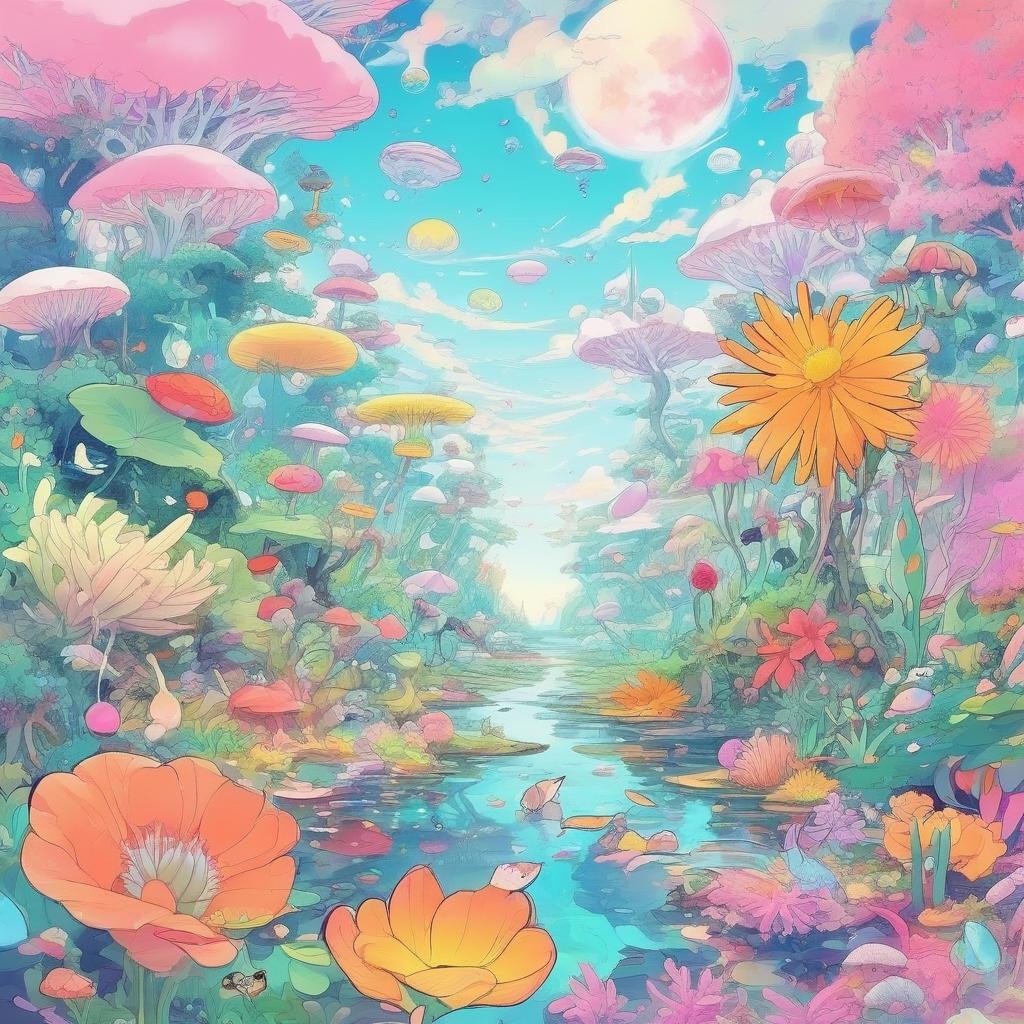「森羅万象」(しんらばんしょう)は、日本語の熟語で、あらゆる物事や現象を意味します。文字通りの意味を考えると、「森羅」は木々が生い茂ることで、事物が隙間なく並び立つ様子を表し、「万象」はすべての種類の現象を意味します。このため、森羅万象は「この世のすべての事物や現象、自然界のあらゆるもの」という広範な意味を持ちます。
この表現は、自然界や宇宙全体の調和と多様性を示し、すべてが互いに関連し合っているという哲学的な視点を強調する際によく使われます。また、仏教や道教などの宗教的・哲学的文脈でも、森羅万象が尊重されることがあります。いわば、森羅万象は「普遍的な存在」や「万物の真理」といった概念と関連付けられることが多いです。
「古事記(こじき)」は、日本最古の歴史書の一つで、712年に完成しました。主に神話、伝説、歴史的事実を収録しています。この書物は、日本の神々の起源や天皇の系譜などが詳細に記されており、日本の文化や信仰の基礎を形作っています。
一方、「森羅万象(しんらばんしょう)」という言葉は、宇宙に存在するあらゆる事物や現象を意味します。これは日本や東洋の哲学において、自然界の全てを包括する考え方として重要な概念です。
「古事記」と「森羅万象」との関係を考えると、「古事記」は日本の神話を通じて、森羅万象の秩序や自然の現象を説明しようとする試みと言えます。古代の日本人は、天変地異や季節の移り変わりを神々の働きや意志として理解し、それを「古事記」の中で物語化しました。このように「古事記」は、森羅万象に対する人間の理解や解釈を反映している側面も持っているのです。
神話の中で描かれる天照大神やスサノオなどの神々は、それぞれが自然界の特定の要素や現象を象徴しており、古事記の物語を通して人間と自然の関係、つまり森羅万象との関わりを深める役割を果たしていると考えられます。
『古事記』は、日本最古の歴史書であり、神話、伝説、歴史をまとめた書物です。712年に完成し、奈良時代初期の文献とされています。『古事記』は、稗田阿礼(ひえだのあれ)が語った内容を太安万侶(おのやすまろ)が筆録したものと伝えられています。
### 構成
『古事記』は三巻から構成されています。
1. **上巻(かみつまき)**:
– 神代(かみよ)の神話を記述しています。天地開闢(てんちかいびゃく)、イザナギとイザナミの国生みと神生み、アマテラス(天照大神)とスサノオ(須佐之男命)神話などが含まれます。
2. **中巻(なかつまき)**:
– 初代天皇である神武天皇の東征から、第15代応神天皇前後の出来事を記述しています。古代の王権の諸問題や国家の形成過程を象徴的に語っています。
3. **下巻(しもつまき)**:
– 応神天皇以降から、第33代推古天皇までの歴代天皇の物語を中心に、その治世の出来事が語られています。
### 意義
『古事記』は、日本の神話体系や古代史を知るうえで非常に重要な資料であり、文学面でもその豊かな物語性が評価されています。神話や伝説の中には、自然や人間の営みが描かれており、当時の社会状況や信仰、文化的観点を考察する手掛かりともなっています。また、似た内容を持つ『日本書紀』と比較しながら研究することで、より深い歴史観が得られます。
■英語に翻訳いたしました。

“Shinrabansho is a Japanese term that refers to all things and phenomena in the universe. Literally, ‘shinra’ means the lush growth of trees, representing things standing closely together without gaps, while ‘bansho’ means all types of phenomena. Therefore, shinrabansho encompasses ‘everything in existence, every phenomenon in the natural world.’
This expression is often used to emphasize the harmony and diversity of the entire natural world and universe, highlighting the interconnectedness of all things from a philosophical perspective. It is also respected in religious and philosophical contexts such as Buddhism and Taoism. In essence, shinrabansho is often associated with concepts like ‘universal existence’ or ‘the truth of all things.'”
The “Kojiki” is one of Japan’s oldest historical texts, completed in 712 AD. It primarily contains myths, legends, and some historical facts. This document details the origins of Japanese deities and the genealogy of emperors, forming the foundation of Japan’s culture and beliefs.
On the other hand, the term “shinrabansho” refers to all things and phenomena existing in the universe. It is an important concept in Japanese and Eastern philosophy, encompassing everything in the natural world.
When considering the relationship between the “Kojiki” and “shinrabansho,” the “Kojiki” can be seen as an attempt to explain the order of the universe and natural phenomena through mythology. Ancient Japanese people perceived natural events and seasonal changes as manifestations of divine actions and intentions, which they narrated through the “Kojiki.” Thus, the “Kojiki” reflects human understanding and interpretation of the universe.
The deities depicted in these myths, such as Amaterasu and Susanoo, each symbolize specific elements or phenomena of nature. Through the narratives of the “Kojiki,” they contribute to deepening the relationship between humans and nature, namely their interaction with the universe.
—
The **Kojiki** is Japan’s oldest history book, compiled in 712 AD. It includes myths, legends, and historical accounts from the early Nara period. It was created from the oral traditions of a storyteller named Hirata no Are, who recited these tales, and they were recorded by Ō no Yasumaro.
### Structure
The Kojiki is divided into three volumes:
1. **The First Volume**:
– It contains myths from the age of the gods. This includes the creation of the heavens and the earth, the story of Izanagi and Izanami who birthed islands and gods, and the tales of Amaterasu (the sun goddess) and Susanoo (the storm god).
2. **The Second Volume**:
– This covers the first emperor, Jimmu, and leads up to the 15th emperor, Ojin. It tells stories about the early imperial lineage and the formation of the state.
3. **The Third Volume**:
– It continues from Emperor Ojin to Emperor Suiko, detailing the events and achievements of these rulers and their times.
### Significance
The Kojiki is crucial for understanding Japan’s mythology and ancient history. It showcases rich narratives that reflect the beliefs and culture of ancient Japanese society. Comparing it with another historical text called the Nihon Shoki provides deeper insights into Japan’s past, illustrating how nature and human life are intertwined in the stories.
—
Feel free to ask if you need further assistance!
【絵本】ガンと闘う10歳の僕におきた奇跡
の書籍版はこちらから
☆☆☆☆☆☆☆☆☆☆☆☆☆☆☆☆☆☆☆☆☆☆☆☆
生き抜く力【ガンと闘う10歳の僕に起きた奇跡】|ほっし校長|note
жжжжжжжжжжжжжжжжжжжжжжжжжжжжжжжжжжжж

